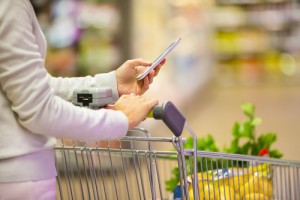Have Beacons grabbed your customers’ attention, yet?
 With the rise of mobile technology, comes the re-introduction of location-based marketing aka Beacons. This topical technology, a tool that can pin point where a customer is and talk to them about relevant information, has certainly got both brands and vendors hot under the collar.
With the rise of mobile technology, comes the re-introduction of location-based marketing aka Beacons. This topical technology, a tool that can pin point where a customer is and talk to them about relevant information, has certainly got both brands and vendors hot under the collar.
A flurry of Beacon-based ideas are now being tested, such as apps that interact with the Beacon, check-in technology used with loyalty points, or multi-brand loyalty schemes. Each has the ability to grab a customer’s attention and hold them as soon as they enter an environment. Or a promoter can wait and hit its target customer when they are precisely where they want them, like when they are nearing a specific product.
“The range of the beacon is 15 to 20 metres. The customer is either past the door, or if you play around with the signal, in a very defined area of the store. A grocer can determine if they are in the cheese or the wine aisle,” says Sean O’Connell, director of product development at Weve the company working with food chain Eat on the Pouch app.
Weve’s Pouch app is a place to store loyalty cards and relevant brand offers, safely and securely. Eat will use it to offer several loyalty schemes within one place, to encourage customer use through added value, as well as enabling Eat to access more customer data. Bluetooth beacons will send out opted-in push notifications with offers and product-related content, and if the trial is successful the platform will be fully integrated with EAT’s point-of-sale infrastructure.
Benefits
Added value, rather than beacon-based spam, is being highly stressed by those adopting the technology, and rightly so. As, according to Swirl, a Beacon solution provider, 77% of smart phone users would be willing to share their location information so long as they received enough value in return.
Hilmi Ozguc, Swirl founder and CEO advises, “Beacon marketing technology caters specifically to consumers’ desire to receive personalized, location-aware content and offers on their smartphones while they shop in-store. To get the best return on investment from beacon-based marketing technology, retailers must focus on delivering valuable, highly-relevant content in real-time.”
Overall the benefit for consumers is that beacon technology allows for enhanced experiences through the provision of relevant information based on their current location and therefore improving their activity.
Mean while for retailers it is more about beacons being able to unlock additional customer insight and targeting capabilities that drive both revenue and improved service.
Supporting data
Swirl reports that its pilots with major retailers have yielded a 75% open rate for mobile offers and a 35% redemption rate. This is also supported by the Forrester report, which states that the success rate of mobile coupons is far higher when linked to Beacons.
Swirl also reports data from a study of 1,000 consumers conducted by ResearchNow which found that when compared with general email or limited time promotions, beacon-triggered offers are much more likely to influence consumer purchase decisions in store. The research confirmed:
- 72% of consumers said that a relevant mobile offer delivered to their smartphone while shopping in a store would significantly influence their likelihood to make a purchase.
- 79% of consumers who have received push notifications on their smartphone in the past six months have made at least one purchase as a result.
- 80% of consumers would use a mobile app more often while shopping in a store if that app delivered relevant sales and promotional notifications.
- 62% would use apps in-store more often if they provided content that was relevant to the shopper’s interests and location within the store.
Tips
Ruth Mortimer, Marketing Week’s editor, gives her three top tips to consider before you roll out Beacons:
- This is a conversation tool, not just a technology, and many departments may have a role in this conversation. Therefore, consider the customer journey and brief all the teams that will be involved in advance.
- Create a priority list. Beacons can have many uses such as offering discounts, changing buyer behaviour, confirming shopper identity or to pick up online orders. Start with the aim that fits your wider goals first then work your way down, rather than trying to achieve them all at the same time.
- Know your customers’ limits and how far you can push them. Their phone is their personal property, and it may be easy to bombard and overwhelm them with promotional messages creating a negative experience.


No comments yet.